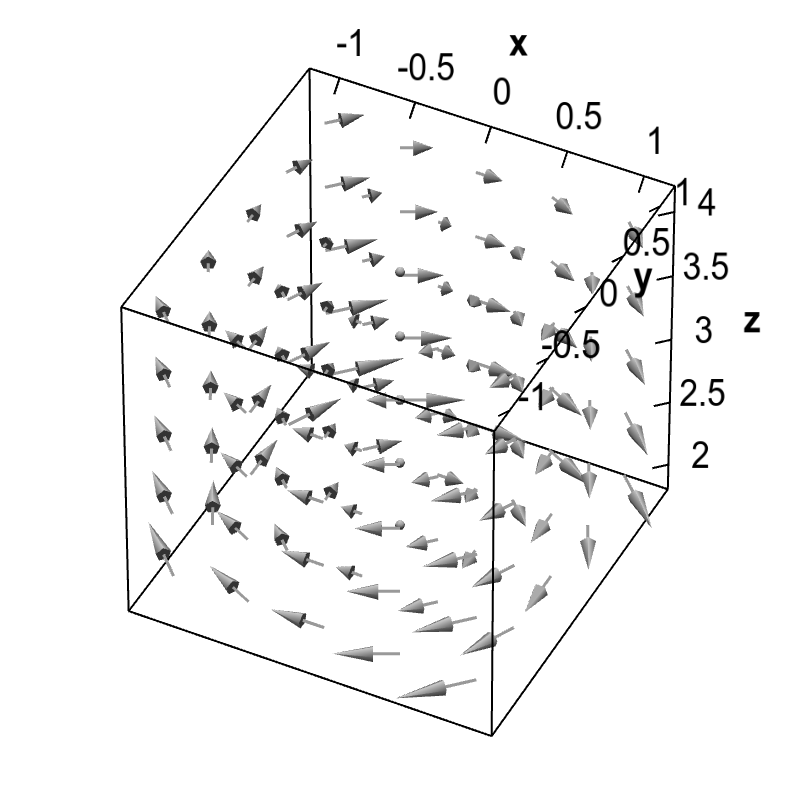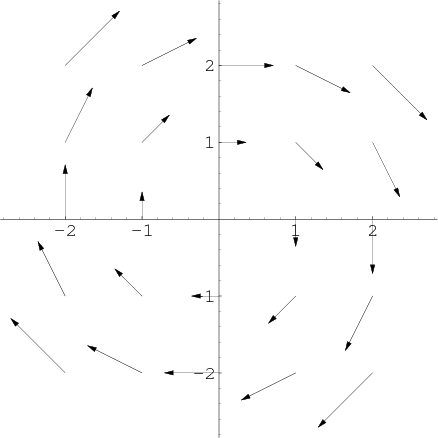Vector fields as fluid flow
As described in the vector field overview, a two-dimensional vector field is a vector-valued function $\dlvf:\R^2 \to \R^2$ (confused?) that one can visualize with a field of arrows. For example, the below graph is a visualization of the vector field $\dlvf(x,y)=(y,-x)$.
One can think of such a vector field as representing fluid flow in two dimensions, so that $\dlvf(x,y)$ gives the velocity of a fluid at the point $(x,y)$. In this case, we may call $\dlvf(x,y)$ the velocity field of the fluid. With this interpretation, the above example illustrates the clockwise circulation of fluid around the origin.
The same interpretation is possible for a three-dimensional fluid flow with velocity represented by a vector field $\dlvf:\R^3 \to \R^3$. In this case, $\dlvf(x,y,z)$ is the velocity of the fluid at the point $(x,y,z)$, and we can visualize it as the vector $\dlvf(x,y,z)$ positioned a the point $(x,y,z)$. For example, $\dlvf(x,y,z)=(y/z,-x/z,0)$ can be viewed as fluid circulating around the $z$-axis.

Applet loading
A three-dimensional rotating vector field. You can rotate the graph with the mouse to give perspective.
The interpretation of vector fields as fluid flow can be useful in understanding basic properties of vector fields, such as divergence and curl, as well as important results in vector analysis, such as Green's theorem and Stokes' theorem.
Thread navigation
Multivariable calculus
- Previous: Vector field overview
- Next: The idea of the divergence of a vector field
Math 2374
- Previous: Vector field overview
- Next: The idea of divergence of a vector field*
Similar pages
- Vector field overview
- The idea of the divergence of a vector field
- Subtleties about divergence
- The idea of the curl of a vector field
- Subtleties about curl
- The components of the curl
- Divergence and curl notation
- Divergence and curl example
- Introduction to a line integral of a vector field
- Alternate notation for vector line integrals
- More similar pages
